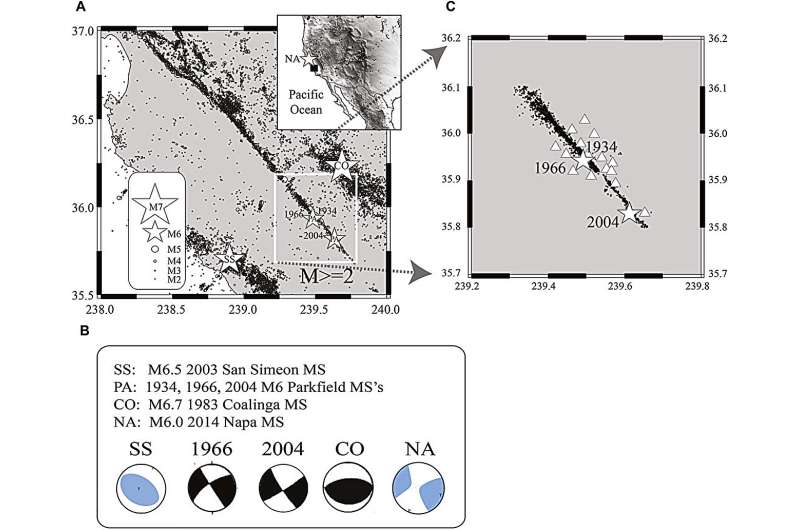April 10, 2024 report
This article has been reviewed according to Science X's editorial process and policies. Editors have highlighted the following attributes while ensuring the content's credibility:
fact-checked
peer-reviewed publication
trusted source
proofread
Seismologists suspect earthquake on San Andreas Fault is imminent despite odd attenuation parameters

A trio of seismologists affiliated with Istituto Nazionale di Geofisica e Vulcanologia, the Berkeley Seismological Laboratory, University of California, Berkeley reports that a part of the San Andreas Fault, at Parkfield, is not producing signals that would suggest an earthquake is going to happen any time soon, but they assert there are factors that suggest otherwise.
The paper, authored by Luca Malagnini, Robert Nadeau and Tom Parsons, is published in the journal Frontiers in Earth Science
The part of the San Andreas Fault located near Parkfield, California, offers scientists who study earthquakes a unique opportunity: Just north of Parkfield, two major plates creep against one another at a constant rate. South of Parkfield, on the other hand, the fault is locked. Because of this, earthquakes happen there in a pattern—roughly every 22 years.
That allows researchers to gather seismic data before, during and after a quake. Such quakes are almost always the same magnitude as well, approximately 6 or slightly higher. The last quake to happen at the site occurred in 2004, which suggests a quake should be coming in the next couple of years. But there is a problem—seismic activity related to the fault does not indicate any signs of an earthquake. Usually, they note, low-frequency waves attenuate prior to a quake, while high-frequency waves increase. But there is no sign of either right now.
The research team notes that the last earthquake to occur in the area was approximately 14 years late. But that was because other earthquakes occurred in close enough proximity to take the pressure off Parkfield—that is not the case this time around. Still, the researchers believe a quake is going to happen soon because of other factors.
These include pressure in nearby parts of the fault that could lead to an earthquake, but with a somewhat displaced epicenter.
The researchers do not have high confidence in their readings; thus, they are not going to be making any formal predictions. Instead, they suggest, as is always the case with earthquakes, everyone will just have to wait and see what happens. In this case, though, waiting is not such a problem—hardly anyone lives in the area.
More information: Luca Malagnini et al, Seismic attenuation and stress on the San Andreas Fault at Parkfield: are we critical yet?, Frontiers in Earth Science (2024). DOI: 10.3389/feart.2024.1349425
Journal information: Frontiers in Earth Science
© 2024 Science X Network





















